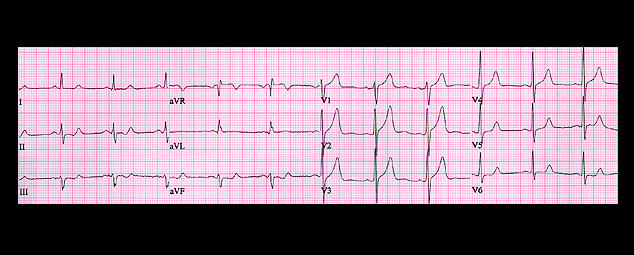
The ECG shown here is from a 50 year old male who was seen in the emergency department within one hour of the onset of crushing chest pain. He appeared somewhat pale but the physical examination was otherwise unremarkable. Note the slight ST elevation in leads V2-V4 and aVR and the down slopping ST segment depression in leads 2, 3 and aVF. There is also slight peaking of the T waves in leads V2-V4. These changes are very early manifestations of acute myocardial ischemia and suggest a culprit lesion located in the proximal portion of the left anterior descending (LAD) coronary artery. Two minutes after this tracing was taken, the patient developed ventricular fibrillation.
